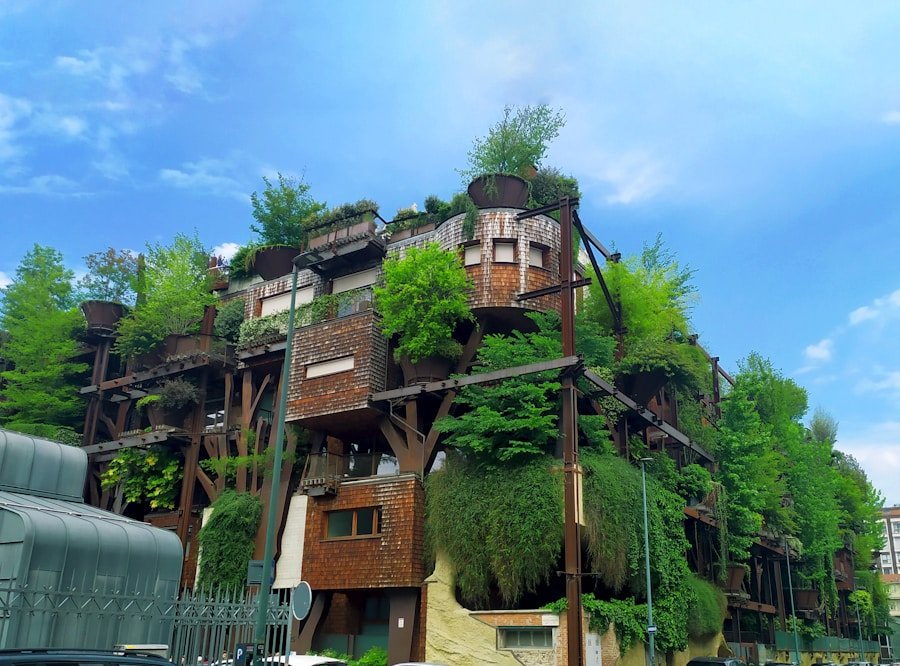Cairo, the capital city of Egypt, is a bustling metropolis that is rich in history, culture, and ancient wonders. As one of the oldest cities in the world, Cairo is home to iconic landmarks such as the Great Pyramids of Giza, the Sphinx, and the historic Khan El Khalili district. With a growing focus on sustainable tourism, Cairo is taking steps to preserve its cultural heritage and natural resources while providing visitors with an unforgettable experience. From eco-friendly visitor centers to community-based tourism initiatives, Cairo is embracing sustainable sightseeing practices to ensure that future generations can continue to enjoy the city’s treasures.
The Great Pyramids of Giza: Eco-Friendly Visitor Center and Transportation
The Great Pyramids of Giza are perhaps the most famous tourist attraction in Cairo, drawing millions of visitors each year. To minimize the environmental impact of tourism at this iconic site, efforts have been made to implement sustainable practices. A new eco-friendly visitor center has been established at the entrance to the pyramids, providing tourists with information about the history and significance of the site while also promoting sustainable tourism practices. Additionally, transportation options to the pyramids have been improved to reduce carbon emissions and congestion. Visitors can now take electric buses or bicycles to reach the pyramids, reducing the reliance on fossil fuels and minimizing air pollution in the area.
In addition to these efforts, the management of the Great Pyramids of Giza has also implemented waste management and recycling programs to reduce the amount of litter and waste generated by tourists. By promoting eco-friendly transportation options and implementing sustainable waste management practices, the Great Pyramids of Giza are setting an example for other historic sites around the world.
Khan El Khalili: Revitalizing Historic District with Sustainable Practices
Khan El Khalili is a historic district in Cairo that is famous for its bustling bazaars, narrow alleyways, and traditional crafts. In recent years, efforts have been made to revitalize this historic area while also implementing sustainable practices. One of the key initiatives has been the restoration of historic buildings using eco-friendly materials and techniques. By preserving the architectural heritage of Khan El Khalili in a sustainable manner, the district is able to maintain its cultural authenticity while also reducing its environmental impact.
Furthermore, sustainable tourism practices have been encouraged within Khan El Khalili, with an emphasis on supporting local artisans and businesses. Visitors are encouraged to purchase locally-made crafts and products, which not only supports the local economy but also reduces the carbon footprint associated with importing goods from other regions. Additionally, efforts have been made to promote walking tours and bicycle rentals within Khan El Khalili, reducing the reliance on motorized transportation and minimizing air pollution in the area. By revitalizing Khan El Khalili with sustainable practices, Cairo is able to preserve its cultural heritage while also promoting responsible tourism.
Al-Azhar Park: Green Oasis in the Heart of Cairo
Al-Azhar Park is a stunning green space located in the heart of Cairo, offering a peaceful retreat from the hustle and bustle of the city. This expansive park was built on a former landfill site, transforming it into a lush oasis that is open to both locals and tourists. In addition to providing a beautiful recreational space, Al-Azhar Park has also implemented sustainable practices to minimize its environmental impact. The park is maintained using organic gardening methods, avoiding the use of harmful pesticides and chemicals that can pollute the soil and water.
Furthermore, Al-Azhar Park has implemented water conservation measures, such as using recycled water for irrigation and installing water-saving fixtures throughout the park. By reducing water consumption and promoting sustainable landscaping practices, Al-Azhar Park is able to preserve its natural beauty while also minimizing its ecological footprint. Additionally, the park has implemented waste management and recycling programs to reduce the amount of waste generated by visitors. By promoting environmental stewardship and sustainable practices, Al-Azhar Park serves as a model for green spaces in urban areas.
Nile River Cruises: Implementing Sustainable Practices on the Water
Nile River cruises are a popular way for tourists to experience the beauty of Egypt’s iconic river while visiting historic sites along its banks. In recent years, efforts have been made to implement sustainable practices within the Nile River cruise industry to minimize its environmental impact. One key initiative has been the adoption of eco-friendly vessels that are powered by clean energy sources such as solar or wind power. By reducing reliance on fossil fuels, these eco-friendly cruise ships are able to minimize air and water pollution while providing a more sustainable way for tourists to experience the Nile River.
Additionally, efforts have been made to promote responsible tourism practices among cruise operators and passengers. This includes educating tourists about the importance of preserving the Nile River’s ecosystem and cultural heritage, as well as encouraging them to support local communities and businesses along the river. By implementing sustainable practices within the Nile River cruise industry, Cairo is able to protect this vital natural resource while providing visitors with an unforgettable and environmentally responsible experience.
Solar-Powered Museums and Cultural Sites
Cairo is home to a wealth of museums and cultural sites that showcase Egypt’s rich history and heritage. In recent years, efforts have been made to implement sustainable practices within these institutions to minimize their environmental impact. One key initiative has been the adoption of solar power as a clean energy source for powering museums and cultural sites. By harnessing the abundant sunlight in Egypt, these institutions are able to reduce their reliance on fossil fuels and minimize their carbon footprint.
In addition to using solar power, museums and cultural sites in Cairo have also implemented energy-efficient lighting and climate control systems to reduce their electricity consumption. Furthermore, efforts have been made to promote sustainable tourism practices within these institutions, such as encouraging visitors to use public transportation or bicycles when visiting museums and cultural sites. By implementing sustainable practices within museums and cultural sites, Cairo is able to preserve its cultural heritage while also promoting environmental stewardship.
Community-Based Tourism Initiatives in Cairo’s Surrounding Villages
In addition to promoting sustainable practices within its urban areas, Cairo has also embraced community-based tourism initiatives in its surrounding villages. These initiatives aim to provide visitors with an authentic cultural experience while supporting local communities and preserving their traditional way of life. One example of this is the development of homestay programs in rural villages, where visitors can stay with local families and participate in traditional activities such as farming, cooking, and crafts.
Furthermore, community-based tourism initiatives in Cairo’s surrounding villages often emphasize responsible tourism practices, such as minimizing waste and supporting local businesses. Visitors are encouraged to purchase locally-made products and souvenirs, which not only supports the local economy but also reduces the carbon footprint associated with importing goods from other regions. Additionally, efforts have been made to promote sustainable transportation options for visitors traveling to these rural areas, such as carpooling or using public transportation. By embracing community-based tourism initiatives in its surrounding villages, Cairo is able to provide visitors with an authentic cultural experience while supporting local communities and preserving their traditional way of life.
In conclusion, Cairo is taking significant steps towards sustainable sightseeing by implementing eco-friendly practices at its iconic landmarks, revitalizing historic districts with sustainable initiatives, promoting green spaces within urban areas, implementing sustainable practices on Nile River cruises, adopting solar power at museums and cultural sites, and embracing community-based tourism initiatives in its surrounding villages. These efforts not only help preserve Egypt’s rich cultural heritage and natural resources but also provide visitors with an unforgettable and environmentally responsible experience. As Cairo continues to prioritize sustainability in its tourism industry, it sets an example for other cities around the world seeking to balance tourism with environmental conservation and cultural preservation.

